宏观经济学导论 Introduction to Macroeconomics
- 格式:ppt
- 大小:397.00 KB
- 文档页数:31
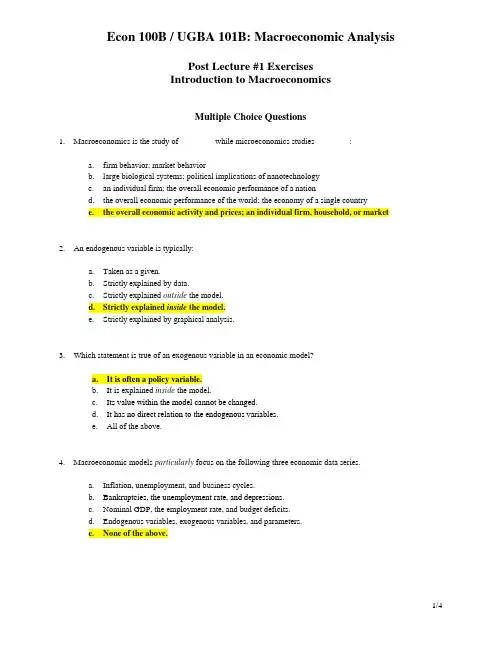
Introduction to MacroeconomicsMultiple Choice Questions1.Macroeconomics is the study of ________ while microeconomics studies ________:a.firm behavior; market behaviorrge biological systems; political implications of nanotechnologyc.an individual firm; the overall economic performance of a nationd.the overall economic performance of the world; the economy of a single countrye.the overall economic activity and prices; an individual firm, household, or market2.An endogenous variable is typically:a.Taken as a given.b.Strictly explained by data.c.Strictly explained outside the model.d.Strictly explained inside the model.e.Strictly explained by graphical analysis.3.Which statement is true of an exogenous variable in an economic model?a.It is often a policy variable.b.It is explained inside the model.c.Its value within the model cannot be changed.d.It has no direct relation to the endogenous variables.e.All of the above.4.Macroeconomic models particularly focus on the following three economic data series.a.Inflation, unemployment, and business cycles.b.Bankruptcies, the unemployment rate, and depressions.c.Nominal GDP, the employment rate, and budget deficits.d.Endogenous variables, exogenous variables, and parameters.e.None of the above.Introduction to Macroeconomics5.An increase in government spending might be an example of a ________ policy for the purpose of :a.monetary; lowering unemploymentb.monetary; reducing inflationc.monetary; increasing savingd.fiscal; reducing inflatione.fiscal; lowering unemployment6.An increase in interest rates might be an example of a ________ policy for the purpose of:a.monetary; reducing inflationb.monetary; lowering unemploymentc.monetary; increasing the quantity of moneyd.fiscal; reducing inflatione.fiscal; lowering unemployment7.Nonactivists propose doing nothing in the face of economic hardship because:a."Markets self-correct pretty rapidly anyway".b.Activist policies can kick in at the wrong time and be counterproductive.c.In the face of high unemployment, activist policies would likely lead to surges in inflation.d.All of the above.e.None of the above.Introduction to MacroeconomicsDiscussion Questions1.Explain the difference between monetary policy and fiscal policy. What are some of the reasons that thesemacroeconomic policies are used?Fiscal policy refers to a government’s changing its taxes or spending or both.Monetary policy is a central bank’s control of interest rates and the amount of money in an economy.These policies are used for such purposes as influencing an economy’s saving rate, reducing or expanding the size of a government’s budget deficit, influencing the inflation rate and unemployment rate in an economy, or limiting business cycle fluctuations and stabilizing economic activity.2.What is stabilization policy? What two important debates occur among macroeconomists regarding its use andwho are the parties to these debates?Stabilization policy is the use of fiscal and monetary policies to stabilize economic activity by reducing business cycle fluctuations. One debate concerns how active stabilization policy should be. It pits nonactivists, macroeconomists who believe that the economy has a self-correcting mechanism that works rapidly to reduce unemployment without the need for stabilization policy, against activists who think this self-correcting mechanism is too slow and therefore call for the active use of fiscal and monetary policies to reduce unemployment when it is unacceptably high. A second debate arises between macroeconomists who advocate the use of policy rules to specify in advance precisely how policymakers must react to changes in unemployment or inflation and those who would allow policymakers greater latitude to use their discretionary judgment to formulate the policy response they believe is most appropriate in a given situation.3.For each of the following statements, explain which would make a reasonable hypothesis to test. Use theconcepts of normative and positive statements in your answers.a.Increases in the duration of unemployment benefits lead to higher rates of unemployment.b.Immigrations is bad for society.c.Increases in the labor force cause output to rise.d.Welfare payments make workers lazy.e.Higher tax rates increase work effort.Statements (a), (c), and (e) are positive statements that could be tested directly. Statements (b) and (d) are normative statements that involve value judgments and thus cannot be tested in an objective way.Introduction to Macroeconomics4.If you were studying the following relationships, which variable would be exogenous and which would beendogenous?a.The effect of investment growth on the growth rate of GDP.Investment, exogenous; GDP, endogenous.b.The relationship between the amount of sunshine and plant growth.Sunshine, exogenous; growth, endogenous.c.The relationship between hours of studying and grade point average.Studying, exogenous; GPA, endogenous.。
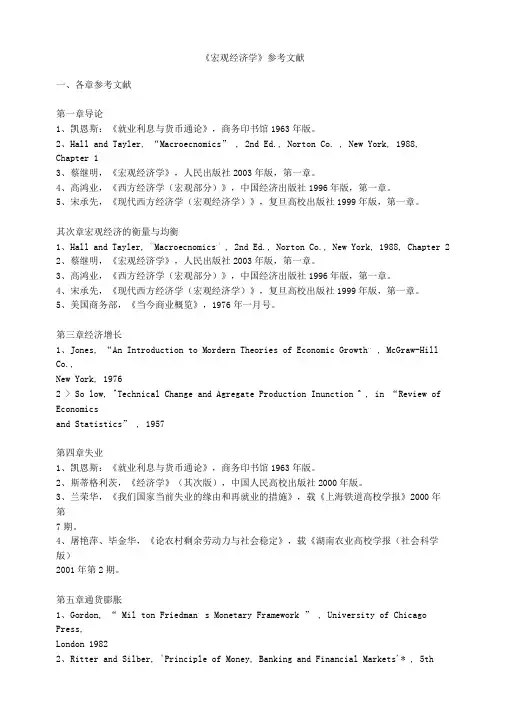
《宏观经济学》参考文献一、各章参考文献第一章导论1、凯恩斯:《就业利息与货币通论》,商务印书馆1963年版。
2、Hall and Tayler, “Macroecnomics” , 2nd Ed., Norton Co. , New York, 1988, Chapter 13、蔡继明,《宏观经济学》,人民出版社2003年版,第一章。
4、高鸿业,《西方经济学(宏观部分)》,中国经济出版社1996年版,第一章。
5、宋承先,《现代西方经济学(宏观经济学)》,复旦高校出版社1999年版,第一章。
其次章宏观经济的衡量与均衡1、Hall and Tayler, <<Macroecnomics,> , 2nd Ed., Norton Co., New York, 1988, Chapter 22、蔡继明,《宏观经济学》,人民出版社2003年版,第一章。
3、高鸿业,《西方经济学(宏观部分)》,中国经济出版社1996年版,第一章。
4、宋承先,《现代西方经济学(宏观经济学)》,复旦高校出版社1999年版,第一章。
5、美国商务部,《当今商业概览》,1976年一月号。
第三章经济增长1、Jones, “An Introduction to Mordern Theories of Economic Growth,, , McGraw-Hill Co.,New York, 19762 > So low, ^Technical Change and Agregate Production Inunction n, in “Review of Economicsand Statistics” , 1957第四章失业1、凯恩斯:《就业利息与货币通论》,商务印书馆1963年版。
2、斯蒂格利茨,《经济学》(其次版),中国人民高校出版社2000年版。
3、兰荣华,《我们国家当前失业的缘由和再就业的措施》,载《上海铁道高校学报》2000年第7期。
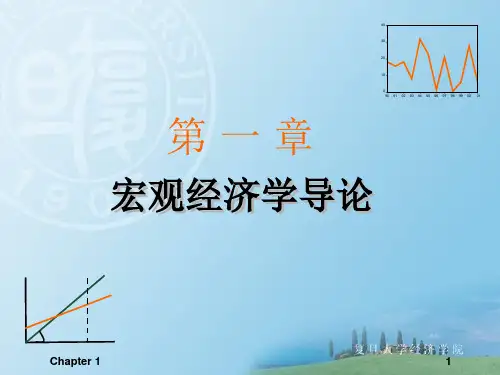
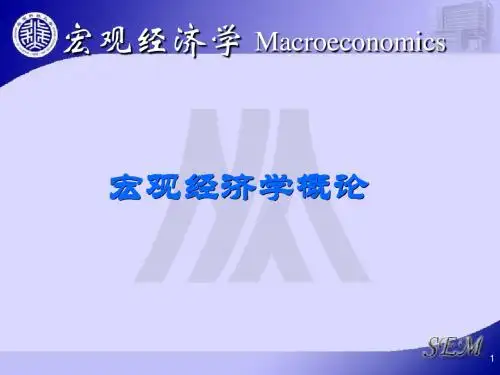
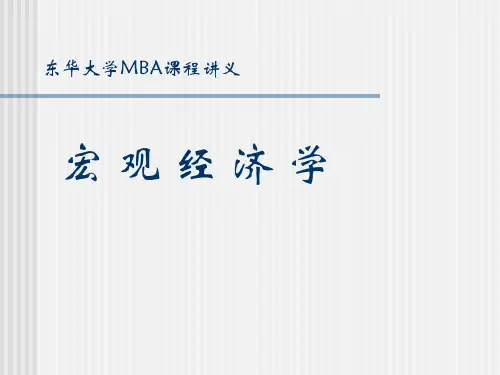
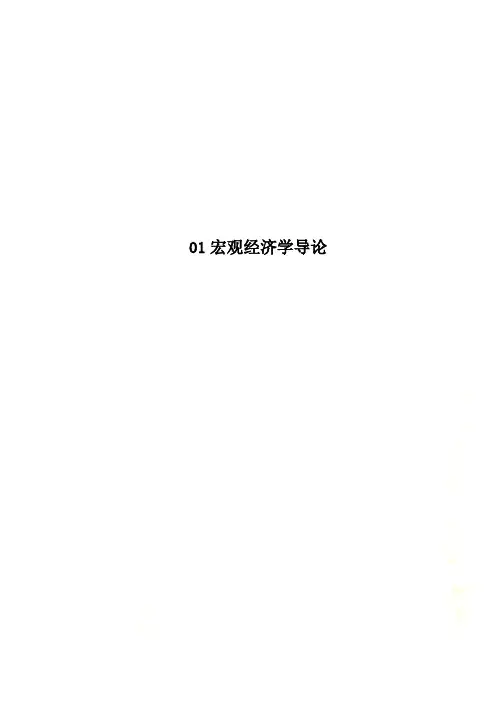
01宏观经济学导论第一章宏观经济学导论重点提示:本章需要重点把握宏观经济学的定义、研究对象和主要研究内容,了解宏观经济学的发展历程。
掌握宏观经济学的研究方法。
第一节宏观经济学的研究对象与主要内容经济学是研究如何有效配置和利用稀缺资源,以最大限度地满足人类社会需要的一门学问。
中国是一个转轨中的发展中大国。
改革开放以来经济发展已经成为中国政府的重要任务。
在发展的过程中,失业率、通货膨胀、国民收入增长水平、人民币汇率变动等经济问题成为公众普遍关注的问题。
如何认识并解决这些问题?这需要我们深入学习经济学,特别是宏观经济学。
作为一门社会科学,宏观经济学因研究对象及研究方法的不同从经济学中分离出来,成为经济学两大分支之一。
经济学的另外一大分支是微观经济学,主要研究稀缺资源的合理配置问题。
宏观经济学着重考察和说明国民收入、就业水平、价格水平等经济总量的决定和波动。
它因以国民经济总体过程活动为研究对象,所以又被称为总量分析或总量经济学。
挪威经济学家弗里希在1933年最先提出“宏观经济学”一词。
而在这之前,古典学派就早已对宏观经济现象进行过研究与考察。
法国重农学派创始人魁奈的《经济表》被认为是最早对资本主义生产总过程进行分析的经济学文献。
此后,宏观经济现象和微观经济现象很少被分割开来进行考察。
这一过程一直持续到凯恩斯的《就业、利息和货币通论》一书出版。
它的出现标志着宏观经济学的形成。
以收入和就业理论为基础的宏观经济分析此时才发展成为一门独立的经济分支学科。
一、宏观经济学的研究对象宏观的英文是“macro”,原意是“大”。
宏观经济学(Macroeconomics)是以整个国民经济为研究对象,通过研究经济总量的决定及其变化来说明社会究投资、出口、消费对拉动经济增长的分力影响和交叉渗透作用,研究失业现象时要考查失业因素并寻找解决失业问题的良性对策。
这些都是十分令人关切的主要宏观经济学问题。
第三,通货膨胀和经济周期问题。
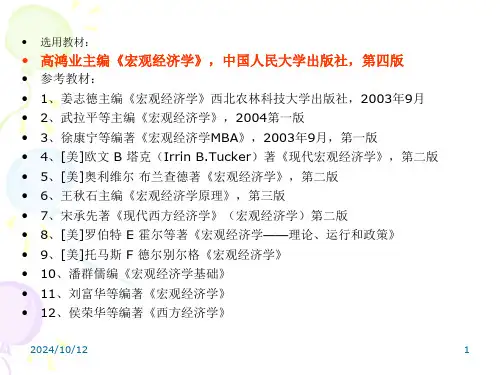
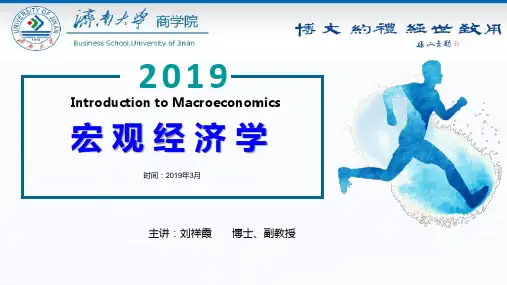
![宏观经济学导论[1]](https://uimg.taocdn.com/41c773dafd0a79563c1e7263.webp)
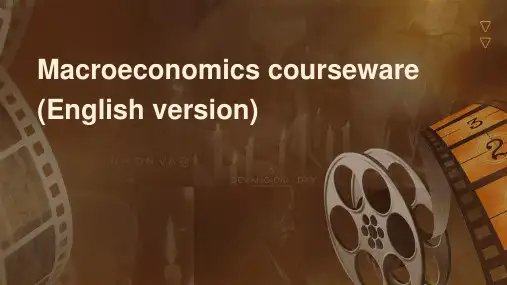

第1章宏观经济学导论:习题答案一、名词解释1.宏观经济学〔Macroeconomics〕,也叫做总量经济学,它是通过对整个社会经济总量决定及其变化的科学研究,来提醒和描述稀缺资源配置、国民收入变化以及宏观经济增长和开展规律的科学。
其研究所涉及的主要容是整个社会的价格水平、总产量、就业水平和其他经济总量的决定。
2.凯恩斯学派(Keynesian)是最初由凯恩斯等人开创的、二战以后在欧美等兴旺国家开展起来、并迅速得到世界上大多数市场经济国家认可与推崇的宏观经济学学派。
凯恩斯开创的宏观经济理论在20世纪五六十年代的美国获得最大开展。
主要代表有凯恩斯、保罗·萨缪尔森〔Paul A.Samuelson〕、詹姆斯·托宾〔James Tobin〕、罗伯特·索洛〔Robert Solow〕等。
3.理性预期学派〔Rational E*pectation School〕是在1970年代在美国出现的一个经济学流派。
相对"适应性预期〞而言,理性预期是指人们预先充分掌握了一切可以利用的信息做出的预期。
人们参照过去历史提供的所有知识并加以有效利用,并经过周密的思考之后,才做出的与有关经济理论相一致的"理性预期〞。
4.货币主义学派〔Monetary school〕是1950-1960年代在美国出现的经济学流派,亦称货币主义,其创始人为美国芝加哥大学教授弗里德曼。
货币学派的政策主主要有:坚持经济自由主义,反对国家过多干预;认为"货币最重要〞;主实施"单一规则〞即固定货币供给增长率的货币政策。
5.供给学派(supply-side school)是1970年代在美国兴起的一个经济学流派。
该学派强调经济的供给方面,认为需求会自动适应供给变化。
其政策主有:崇尚"供给自创需求〞的萨伊定律;反对政府过多的干预;应通过减税刺激投资,增加供给;反对过多社会福利,反对通货膨胀,竭力主大幅度减税等。